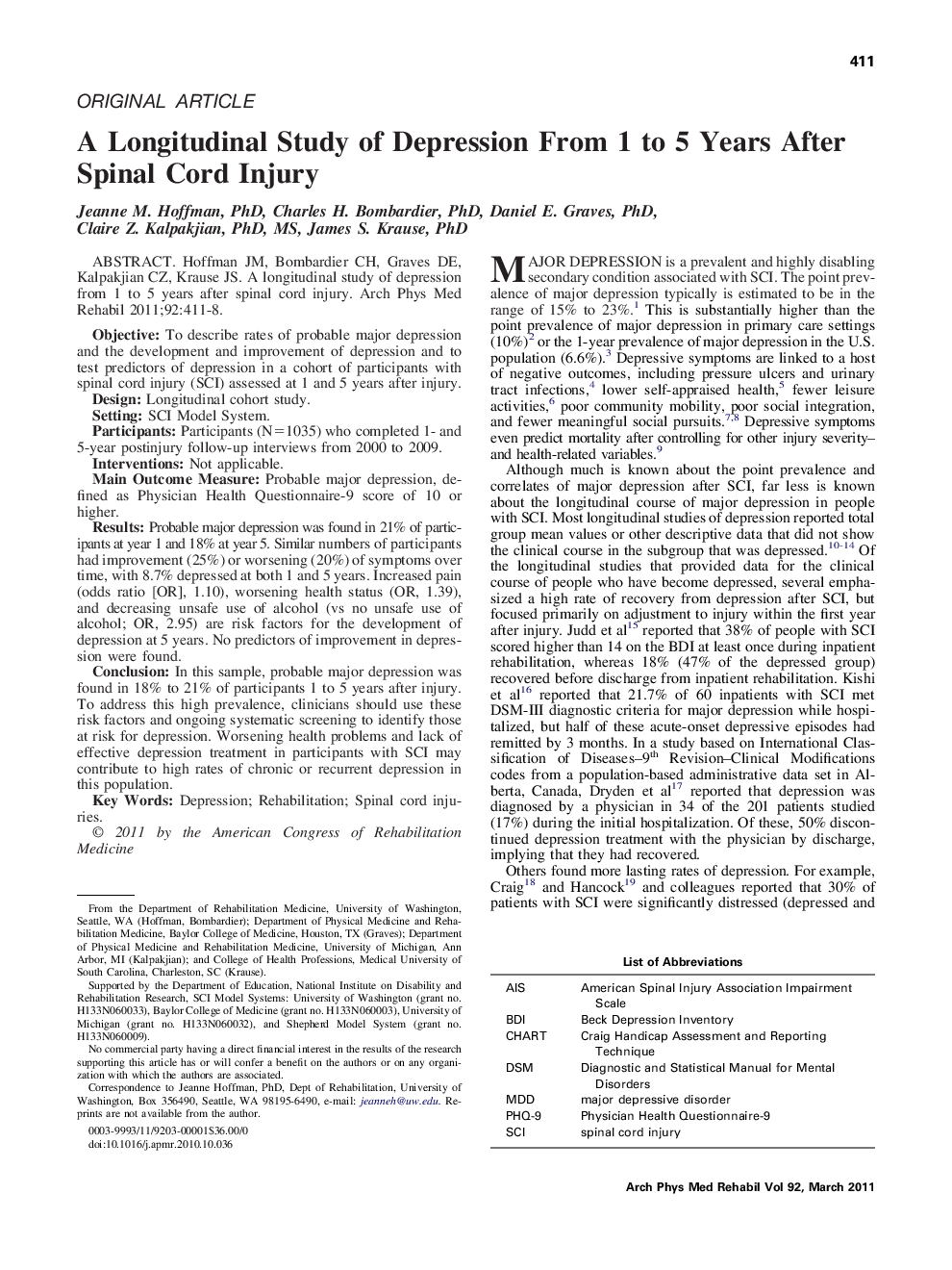| Article ID | Journal | Published Year | Pages | File Type |
|---|---|---|---|---|
| 3450284 | Archives of Physical Medicine and Rehabilitation | 2011 | 8 Pages |
Hoffman JM, Bombardier CH, Graves DE, Kalpakjian CZ, Krause JS. A longitudinal study of depression from 1 to 5 years after spinal cord injury.ObjectiveTo describe rates of probable major depression and the development and improvement of depression and to test predictors of depression in a cohort of participants with spinal cord injury (SCI) assessed at 1 and 5 years after injury.DesignLongitudinal cohort study.SettingSCI Model System.ParticipantsParticipants (N=1035) who completed 1- and 5-year postinjury follow-up interviews from 2000 to 2009.InterventionsNot applicable.Main Outcome MeasureProbable major depression, defined as Physician Health Questionnaire-9 score of 10 or higher.ResultsProbable major depression was found in 21% of participants at year 1 and 18% at year 5. Similar numbers of participants had improvement (25%) or worsening (20%) of symptoms over time, with 8.7% depressed at both 1 and 5 years. Increased pain (odds ratio [OR], 1.10), worsening health status (OR, 1.39), and decreasing unsafe use of alcohol (vs no unsafe use of alcohol; OR, 2.95) are risk factors for the development of depression at 5 years. No predictors of improvement in depression were found.ConclusionIn this sample, probable major depression was found in 18% to 21% of participants 1 to 5 years after injury. To address this high prevalence, clinicians should use these risk factors and ongoing systematic screening to identify those at risk for depression. Worsening health problems and lack of effective depression treatment in participants with SCI may contribute to high rates of chronic or recurrent depression in this population.
